You might have thought the Fujifilm X-T series was finished with the release of the X-H1, that Fujifilm was digging into the competition and leaving their love of style behind as was evident with that monstrosity. (We mean that lovingly.) But, the X-T3 is here, and it’s as beautiful as ever. Not only that, but the X-T3 even outperforms the X-H1 in many areas as far as their spec sheets are concerned. Fujifilm’s approach to the mirrorless camera war of 2018-20?? is a two-pronged assault on the flanks. They’re releasing powerful cameras with APS-C and medium format sensors in multiple iterations while skipping full-frame entirely. Fuji’s alternative strategy is a very interesting pincer attack on the market, and we definitely shouldn’t count them out just because they’ve officially rejected full-frame.
Aesthetically pleasing and minimally invasive, the X-T3 is an artist’s camera. Upon initial inspection of the retro chrome exterior, we found some fairly decent sealing around the ports and doors. The X-T3 clearly isn’t meant to go toe to toe with the full-frame workhorses in this arena, but it won’t be done in by a light sprinkling rain either. It’s solid yet lightweight, what we supposedly all want out of a mirrorless camera as opposed to the DSLR-with-an-EVF style form factor that is clearly the current fan favorite judging by Canon, Nikon, and Sony’s recent releases.
We begin by extracting the exterior screws. Fuji has a knack for hiding these.
See what I’m talking about? They really make a game out of it.
Once you find them all, the bottom should budge off with some gentle prying. Here is where we start to notice the difference in sealing between this model and the more hardcore professional cameras we’ve been examining recently. The X-T3 obviously isn’t dressed for the Amazon.
From there, a few more screws come out and the back should come off, multi-angle articulating LCD included. We were met with a single motherboard with neatly aligned connectors and a surprising 11 soldered connections. That’s a lot more than the 0 soldered connections we’ve found on most recent releases.
Here are the solder points close up. All need to be desoldered to remove the board and access the sensor.
First, we’ll remove the top. Here is a good view of what all those beautiful dials look like from the inside.
Once all soldered connections are separated, we can unscrew the board and pull it out.
Motherboard: front.
Motherboard: back. It’s easy to forget this camera has dual SD card slots when they’re this neatly arranged. Sony’s dual SD card slots on the A7R III are both crammed onto one side of the board and look like they’re at risk of falling off the edge. You can see for yourself here.
Now that the board is out, the sensor is still held in place by some copper tape, more screws, and a copper shield covered in heat-sinking material you can see near the center of the photo on the right. That piece makes lifting the sensor directly up from the body impossible.
The solution: lift up and to the left VERY CAREFULLY. The sensor rests on very light and thin shims that are critical for accurate focusing. If they are lost, broken, or bent, you’ll have a big problem on your hands.
A more intimate look of what is left, including the shutter mechanism.
Finally, the sensor, one sensor that looks suspiciously similar to the one found in the X-H1, minus an IBIS shaker. Of course, we know this isn’t the same sensor. The X-T3 sensor weighs in at 26 megapixels of resolution, 2 more than the X-H1. The X-T3’s sensor is also a BSI (backside illuminated) CMOS sensor which should significantly boost its low-light performance.
Fujifilm has always been a favorite within the infrared photography community and has been stealing the hearts of Nikon shooters ever since the XT-1 came out in 2014. Sorry Nikon Df, you just didn’t quite nail the look. When we put this little heartbreaker back together, it’ll be a full spectrum camera capable of detecting all the way from near Ultraviolet into Infrared beyond 1000nm. We’re looking forward to giving this one a full Infrared Photography review!
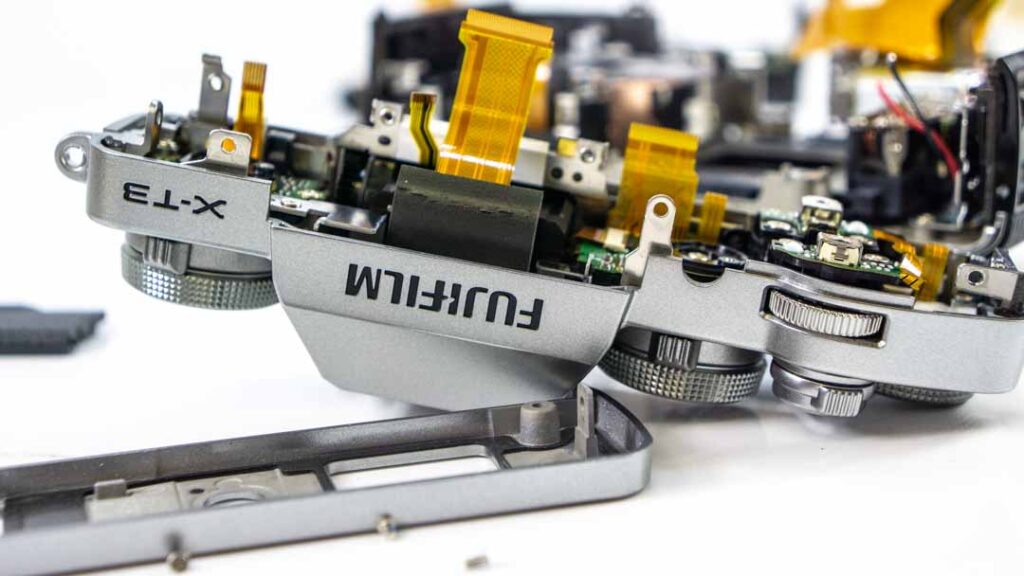

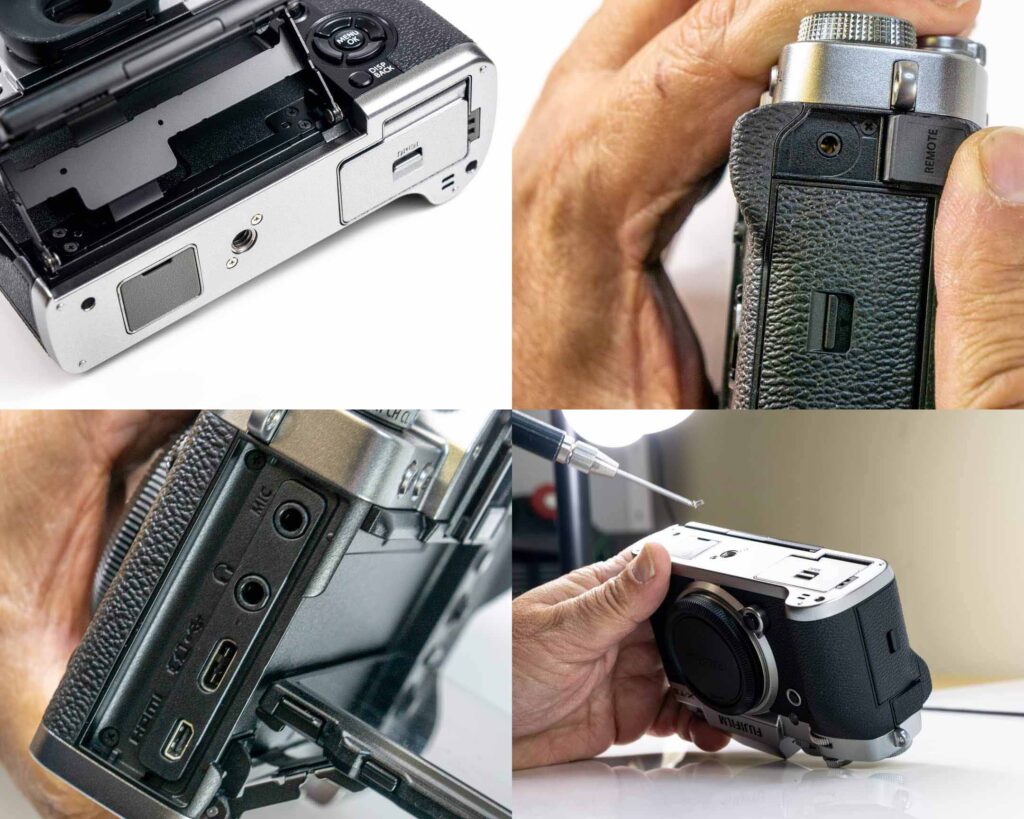
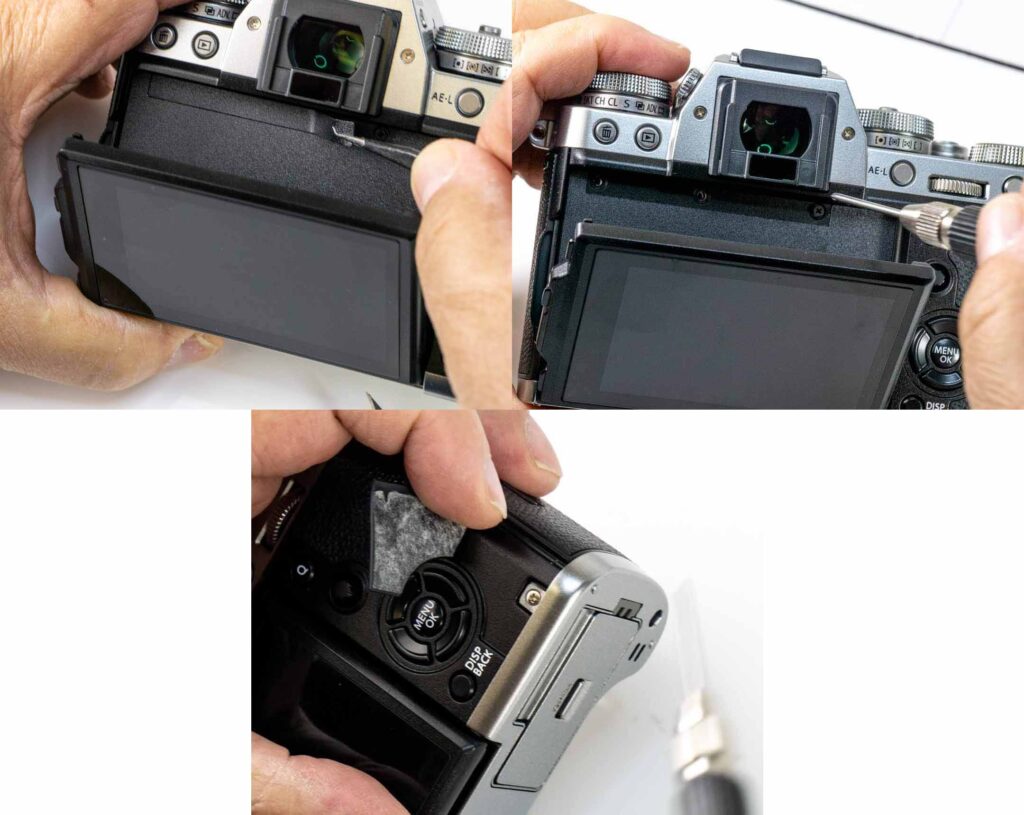

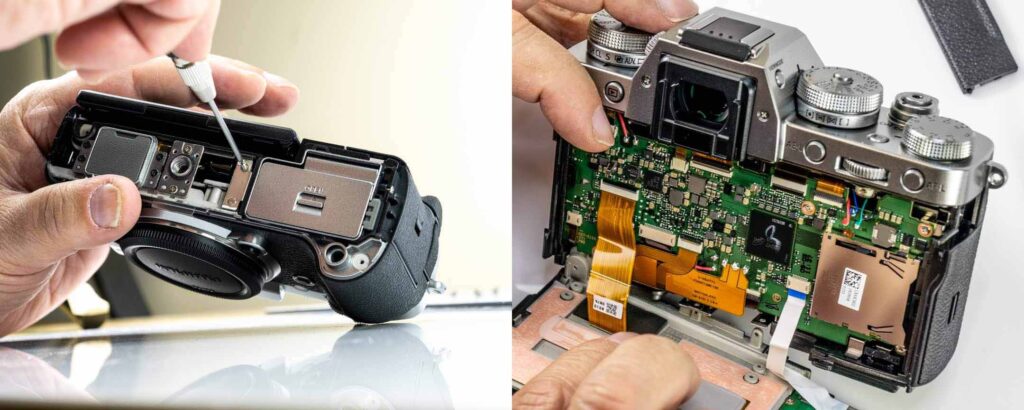
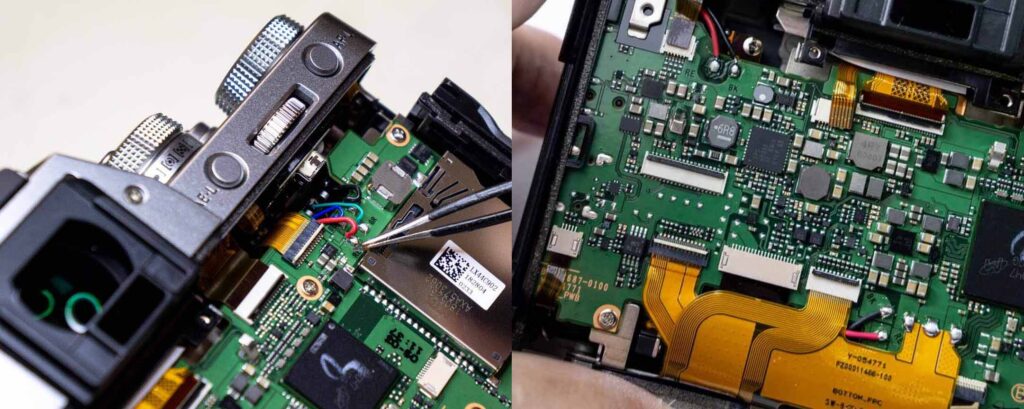
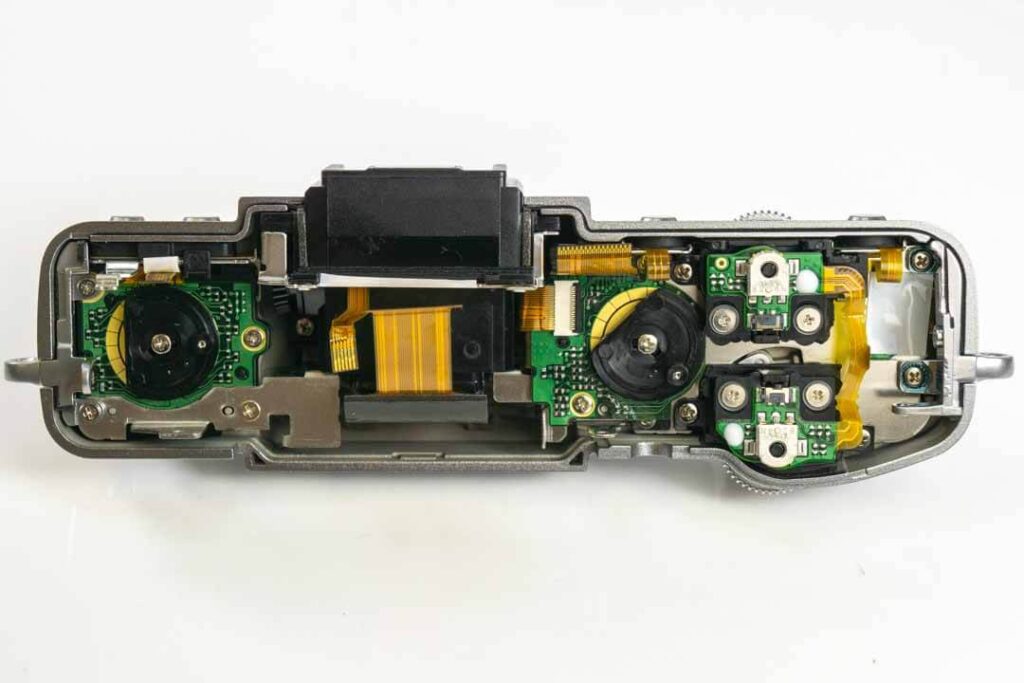

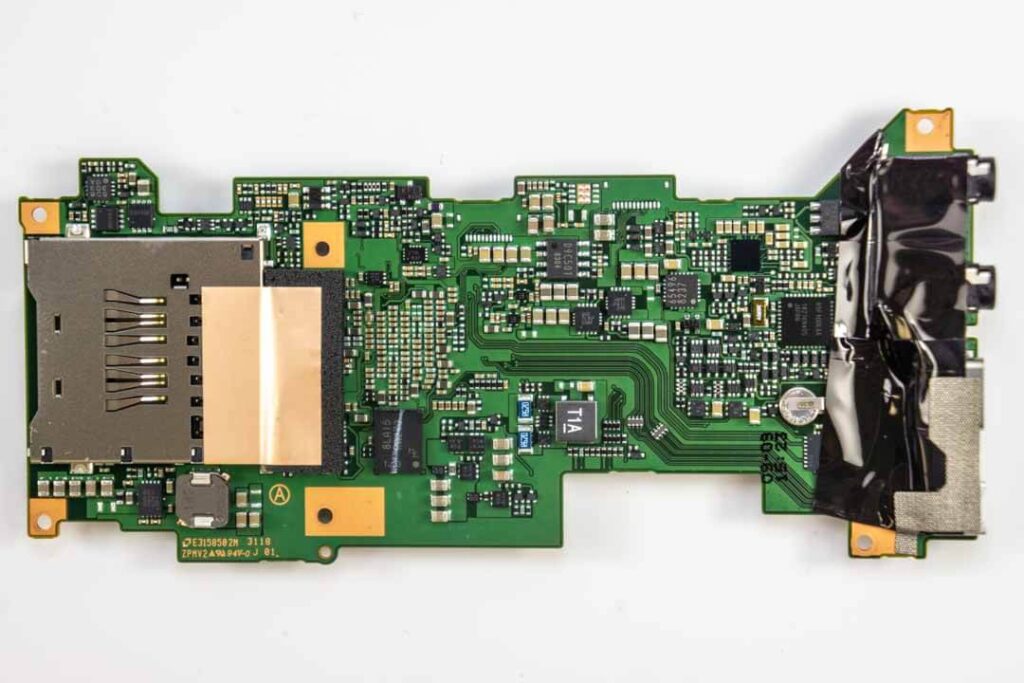
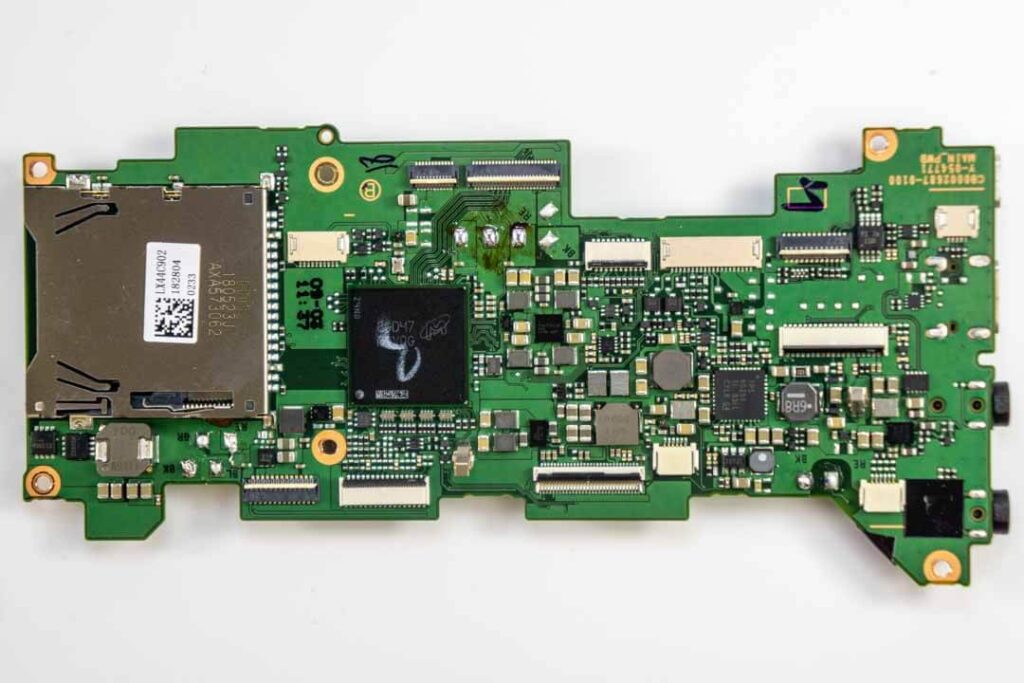

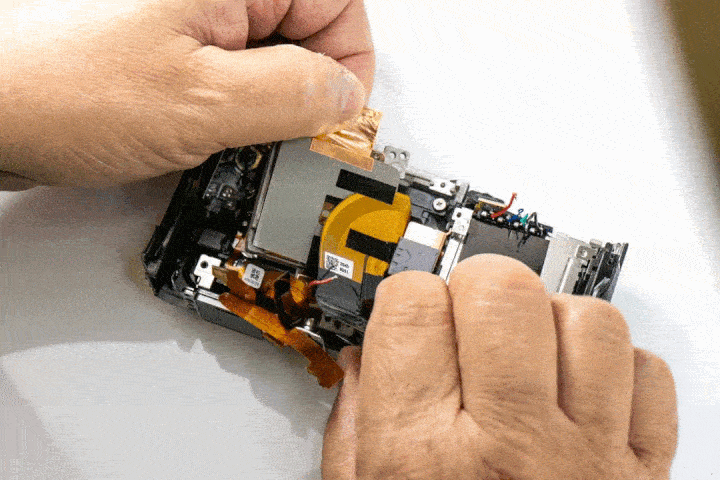
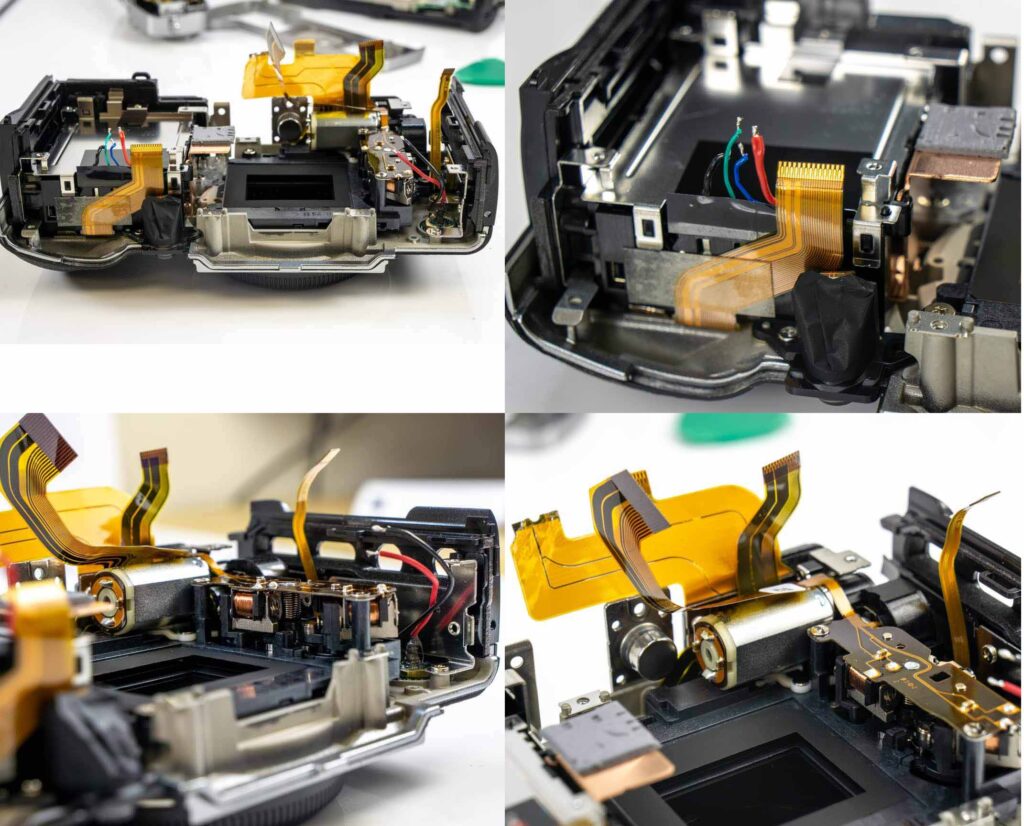

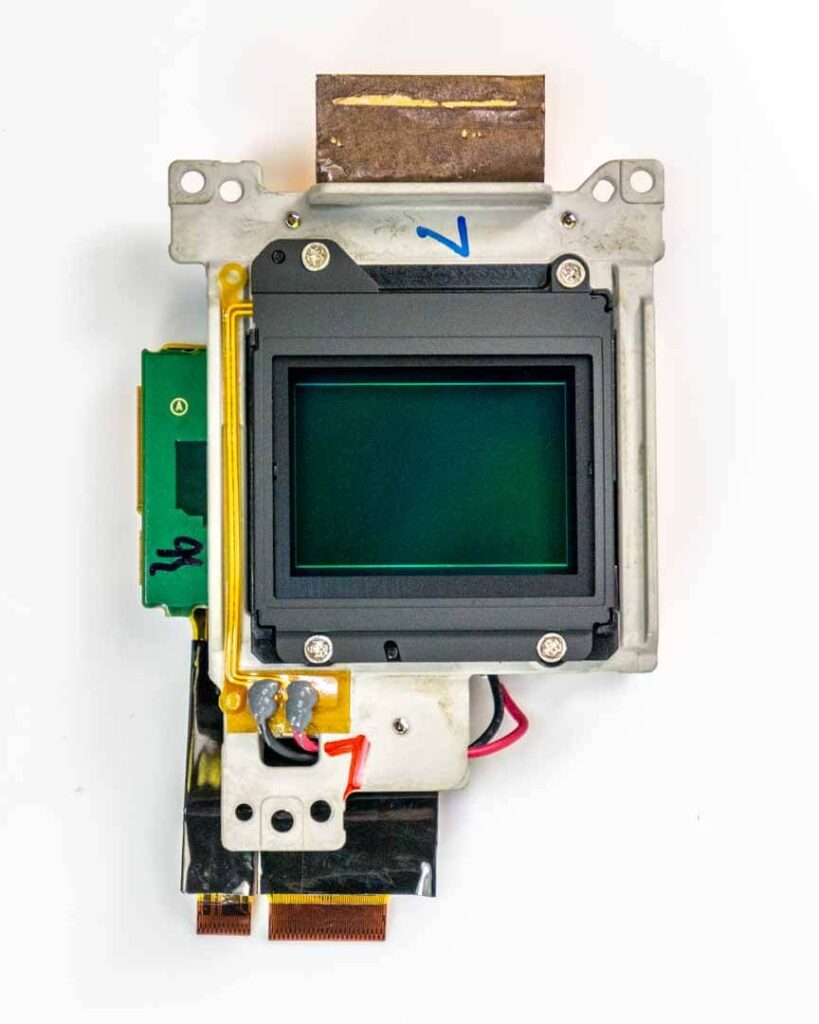





20 Responses
Hi Pat, did you get a chance to take a look at the back of the sensor underneath the metal plate? It should reveal the code for the sensor, it was speculated that it’s called IMX571CQR-C.
Superb. Will do you the X-H1?
Hi.
Great workmanship.
I am a beginner and I admire it.
My X-T3 took a dump and they think it is a loose connector. They told me not to worry cause they will tape it down so it won’t happen again! I’ve been told all camera manufacturers use tape to hold the connectors in place. I find this hard to believe. Did you find any tape holding connectors?
Thanks
Tape is actually fairly common from many manufacturers, but isn’t used on all connectors.
Hi, you say “Upon initial inspection of the retro chrome exterior, we found some fairly decent sealing around the ports and doors. The X-T3 clearly isn’t meant to go toe to toe with the full-frame workhorses in this arena, but it won’t be done in by a light sprinkling rain either.” I had been thinking the X-T3 was one of the better sealed mirrorless cameras. Could you comment on what full-frame cameras you mean?
Thx
By our observations, the X-T3 was definitely well sealed. It just wasn’t as tightly wrapped as the Z7 or EOS R. We have not actually tested any cameras for weather resistance, only observed the parts as we disassemble the cameras and draw our conclusions there.
Is there any way I can get high res versions of your motherboard photos? I’m trying to identify some components. Thanks!
Fascinating all the detail you shared in the workings of this camera! I’m curious as to how thick is the magnesium alloy body near the hot shoe on the XT3 vs other cameras. Mine developed a crack & the entire hot shoe came off. I measured with a caliper- 1.2mm thick. That seems really thin.
Hi!
Did you happen to have a higher resolution shot of the sensor side of the main board (DSC01359)? I have a camera that forgets it’s internal settings on every power-down supposedly due to a bad internal battery, and I’m curious of the model number/battery type to see if it’s procurable before disassembling mine!
Cheers,
Joe
Is there any chance i could get in direct contact with you about an issue regarding the view mode button?
Sure send us an email
to the contact email listed on the site? Or is there a number i can call?
You can call or email, right now email is better.
Did you find anything to suggest the diopter / evf set up could loosen? I have recently bought an XT3 and there seems to be a slight movement internally and a bit ‘clunky’ within the viewfinder when focussing. Images are fine but wonder if this will damage the camera longer term
Great explanations and descriptions of the rebuild, Kolari. Thanks for showing us that process. Truly skillful work. Excellent photos too. nicely lit and all.
these Fuji XT cameras are a great package. so fast to use, with proper controls that you can adjust without even having to turn on the camera. very sensible, with minimal menu layers etc.
so fuji XT etc are better for full spectrum than Nikons, or you are just referring to the looks of Nikon being inferior?
Hello ! many thanks for this post, sorry to bring it back up since it’s rather old. I see on the motherboard front a small battery. By any chance, is it something you have the reference for?
My XT3 is having reset issues, while restoring setting through the app is a workaround, I’m considering digging in to change this internal battery.
Made the move to open it. While it’s quite an adventure, battery model is MS414GE FL26E if it could help anyone.